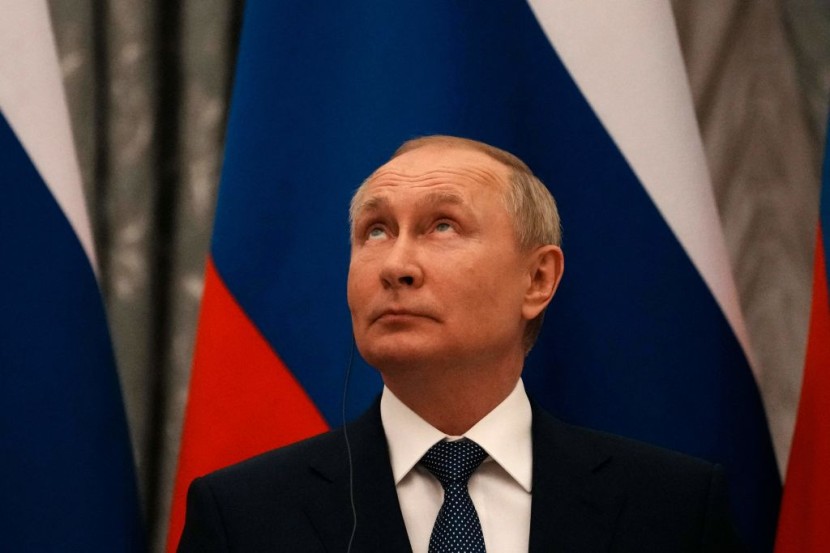
According to the Ukrainian army, Russia launched 36 cruise missiles on Thursday, one day after six balloons that seemed to be radar reflectors were seen over Kyiv.
Residents observed as the rubble fell on nearby fields: The Independent, which was present when the retrieval took place, was asked to refrain from disclosing the precise location for security concerns. We have been informed that NATO analysts as well as Ukrainians want to study the debris.
Russian Balloons Designed To Confuse Ukrainian Troops
A woman was murdered and important infrastructure was destroyed by missiles launched from land and the water. In apparent allusion to the balloons over Kyiv, Ukraine noticed a change in Russian strategy. The majority of the balloons, which were being propelled by wind, were shot down, according to the military in Kyiv.
Social media posts depict a crude design with a cross-shaped device that reflects radar trails beneath the balloon that is held aloft by a line. Per The Wahington Post via MSN, recent days have also seen reflector-equipped balloons flying over Dnipropetrovsk's eastern sector.
Military officials claim that some of the balloons have the ability to video and contain reflectors to deflect radio signals in order to "disorient" missiles that utilize radar to pinpoint targets. It is unknown whether Russia has ever employed reflectors on balloons, although it has used them to try and defend priceless assets like the Kerch Bridge, which connects Russia and Crimea.
High-altitude balloons have recently heightened tensions in both the US and Ukraine. Romania also sent out fighter fighters earlier this week after spotting something that looked like a weather balloon at a height of about 11,000 feet (3,350m). For a brief while, Moldova temporarily closed its airspace because to the enigmatic object, NPR reported.
The balloons appear to be an addition to Russia's airborne employment of cruise missiles and less expensive Iranian drones as the first anniversary of its invasion of Ukraine draws near. The Russian balloons may cause radar systems to malfunction and tempt the Ukrainian military to fire incredibly expensive surface-to-air missiles (Sams) against purported false targets.
Given the size and speed of the balloons, the air force official claimed that Ukrainian radar was able to correctly identify the objects and, at least twice, bring them down with bullets rather than wasting missiles.
Russian Aircraft Arriving to Ukraine-Neighboring Bases
Meanwhile, large numbers of Russian aircraft have reportedly arrived at sites close to Ukraine, according to Ukrainian and some Western security authorities, possibly as a prelude to an upcoming massive operation.
At a Nato conference earlier this week in Brussels, US Defense Secretary Lloyd Austin expressed uncertainty about whether the Kremlin was preparing a "major aerial campaign." He continued, however, that "we need to do everything that we can" to expedite Ukraine's air defenses because "Russia has a large number of aircraft in its inventory and a lot of capacity left."
Per The Independent, it can be challenging for radar systems, which are typically made for detecting fast-moving air objects like aircraft and missiles, to detect balloons floating at high altitudes on air currents.
Yuriy Ihnat, a spokesman for the Ukrainian air force, stated that his nation was far more focused on the most recent barrage of Russian missiles that were shot at Ukraine overnight, including the Kh-22 ballistic missiles that are virtually impossible to intercept.
Ihnat advised against drawing too many comparisons between the enormous Chinese balloon that started the recent frenzy and the alleged Russian balloons spotted over Kyiv, which are much smaller and have a diameter of only five feet. These balloons also mostly seem to have been created as decoys, and are much smaller.
Following the downing of a Chinese balloon over North America and three additional items in the days that followed, a flurry of balloons were observed above Ukraine by US Air Force F-16 planes. The Military claims that the balloons were created for spying, despite Beijing's insistence that they were only intended to investigate the weather.
A balloon that entered Moldova's airspace on Tuesday close to the Ukrainian border caused the country to briefly close its airspace. According to the Chisinau authorities, this is being done to guarantee the safety of passenger aircraft. After reports of balloon sightings in its sky, Romanian jets were also scrambled this week.
Jens Stoltenberg, the secretary general of NATO, has issued a warning that China and Russia are stepping up their spying and surveillance efforts, including using balloons. "This emphasizes the necessity of our alertness, our heightened presence, and the improvement in our intelligence-sharing, airspace monitoring, and airspace protection capabilities," he said.
Related Article: US to Americans in Russia: 'Depart Immediately'
@YouTube
© 2025 HNGN, All rights reserved. Do not reproduce without permission.








